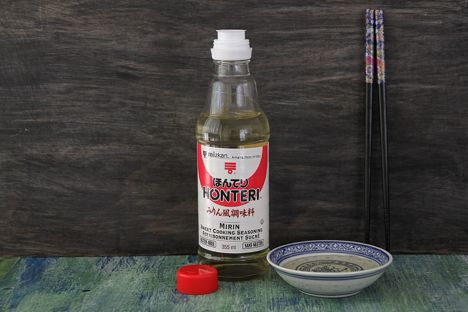
Flavours of Japan: mirin
Nisha Thomas explores the history and flavour profile of mirin, suggesting delicious new ways of using this Japanese cooking wine in creative dishes.
Flavours of Japan: mirin
Nisha Thomas explores the history and flavour profile of mirin, suggesting delicious new ways of using this Japanese cooking wine in creative dishes.
View more from this series:
Flavours of JapanJapanese cuisine has become so popular over the years, and with loads of dedicated restaurants cropping up all over and staple ingredients more accessible in shops it’s become so much easier to experiment with this unique cuisine.
From trendy Japanese restaurants to high street joints, my husband and I have had our fair share of Japanese food experiences and have thoroughly enjoyed quite a few of them – and others not so much. I think the trick lies in understanding the flavours involved before deciding what to order, so it’s always worth brushing up on Japanese ingredients. With that in mind, I was very glad when I got the chance to work with mirin in this new range of recipes and gain an understanding of this ubiquitous Japanese ingredient.
What is mirin?
Mirin is a type of cooking wine popular in Japanese cuisine which brings immense flavour to any dish it's added to. Mirin has a distinct sweet flavour, unlike other Asian condiments like soy sauce known for their umami qualities. It is made of rice yeast and alcohol and there are a few different varieties available with varying alcohol content. Light golden-yellow in colour with a slightly thicker consistency than sake, it is a superb ingredient for glazing in particular thanks to its high sugar content.
Early uses
Mirin has a relatively long history in Japanese cooking, with records showing that it was during the Sengoku period, or 'Age of Civil War' (1467–c. 1603), that it really blossomed in Japanese cuisine. Its original incarnation was made by mixing sweet sticky rice with rice wine to enjoy as a festive drink but, due to its very high yeast and sugar content, it spoilt fairly quickly. To prolong the shelf life, brewers started distilling the wine, which resulted in a clear concentrated version thanks to the ageing and purification process. These brews bore a much closer resemblance to the mirin we are familiar with today, only with a much higher alcohol content. During this time mirin was mainly used as a sweetener, being much easier to source than sugar – only later was it taken up as a highly-regarded seasoning, and now plays a very prominent role in Japanese cooking.
Cooking with mirin
There are a few different things to take into account when buying your mirin. Hon mirin, or true mirin, sits at around 14% ABV and more readily resembles rice wine, with a subtle sweetness and umami depth of flavour. On the other end of the scale, mirin-style seasonings came onto the market when rice production was low and alcohol was heavily taxed in Japan. The result is a slightly sweeter seasoning, usually sitting at 1% ABV or under, and is still a great, thriftier alternative to hon mirin.
As an ingredient, mirin is quite versatile and can be put to use in some fabulous ways. Although the most common use of mirin in the western world is in found in a teriyaki sauce or stir-fries, there are a multitude of ways it can be put to use in your dishes. Its consistency makes it a great glaze – especially for seafood as it helps to counteract stronger fishy flavours and aromas, but it worked brilliantly as a glaze for my teriyaki pork burger recipe as well. Mirin can also be used to make homemade tofu, as a wonderful marinade for meat (such as lamb chops) or as part of a zingy salad dressing.
With its high sugar content, why not experiment and use mirin in a dessert? Try adding a dash of mirin to the pan when poaching fruit to add a new dimension of flavour, which works particularly well with firm fruits such as peaches, pears and apricots.


